Key takeaways
- Fleetwood Mac collectibles offer fans a tangible connection to the band’s history, with each item telling a unique story.
- Identifying rare items involves paying attention to details like matrix numbers, printing errors, and provenance to confirm authenticity.
- Finding collectibles can happen in various places, including local record stores, online marketplaces, and flea markets, often requiring patience and keen observation.
- Caring for collectibles is essential, involving proper storage and handling to preserve their value and significance as part of the band’s legacy.
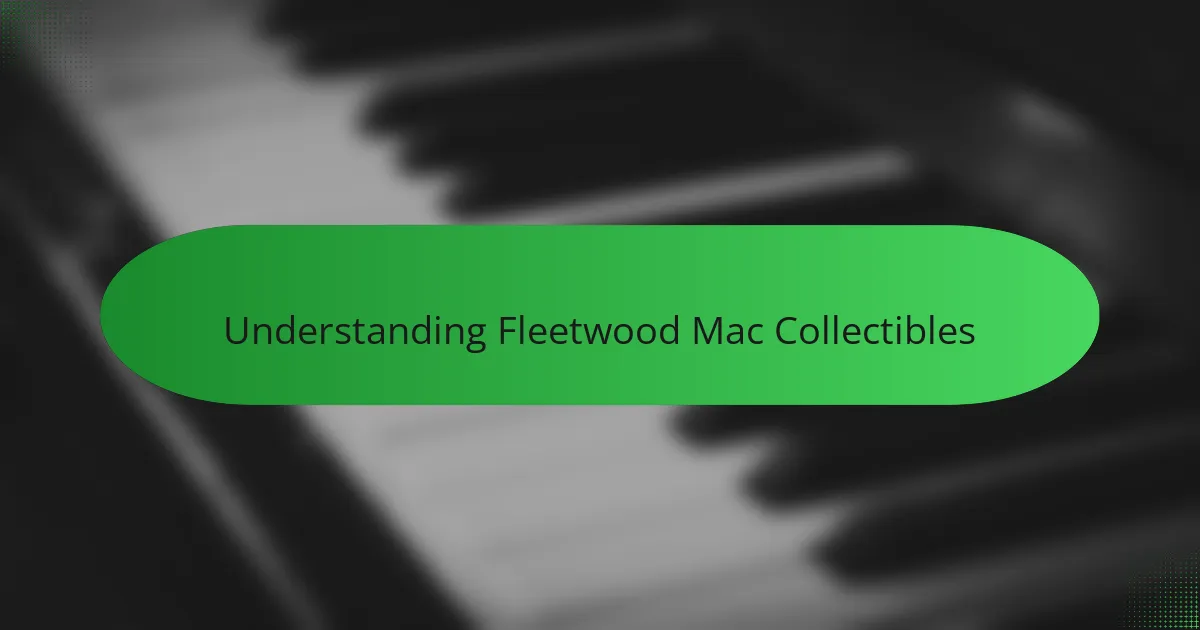
Understanding Fleetwood Mac Collectibles
When I first started diving into Fleetwood Mac collectibles, I quickly realized it’s not just about owning merchandise—it’s about cherishing pieces of rock history. Have you ever held an original vinyl or seen a rare tour poster up close? There’s an almost tangible connection to the band’s journey and evolution that makes these items incredibly special.
What fascinates me most is how each collectible tells a story beyond the music—whether it’s a limited-edition album pressing or a signed memorabilia piece. I remember finding a rare 1977 Rumours pressing that wasn’t just valuable but felt like a snapshot of the band’s creative peak. It made me wonder: What stories lie hidden in the grooves and signatures we often overlook?
Understanding the nuances between different types of Fleetwood Mac collectibles has been a game-changer in my hunt. Things like edition numbers, pressing locations, and even subtle artwork variations can drastically affect an item’s rarity and emotional weight. Isn’t it amazing how these details transform a simple object into a treasured relic for fans like us?
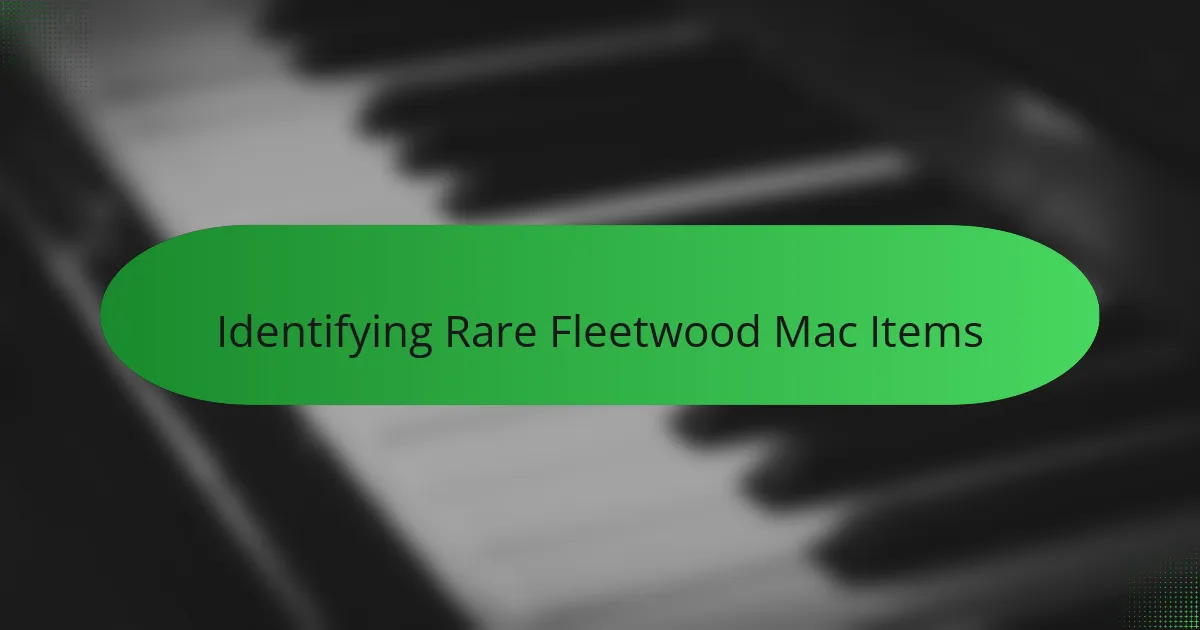
Identifying Rare Fleetwood Mac Items
Knowing how to spot a rare Fleetwood Mac item often comes down to the little details that many overlook. For example, I once stumbled upon a small printing error on the back cover of an early vinyl pressing—it immediately caught my eye because it was so unusual. Have you ever found something that made you pause and think, “This has to be special”?
I’ve learned to pay close attention to things like the matrix numbers etched into the vinyl’s runout groove. At first, these characters seemed like meaningless codes, but digging deeper, I realized they reveal the pressing plant and even the mastering engineer—clues that can confirm if an album is a first pressing or reissue. Trust me, once you start recognizing these markings, your whole approach to collecting changes.
Sometimes it’s all about provenance too. I remember finding a signed backstage pass tucked inside an old tour program, which instantly upped the item’s rarity and my excitement. How many fans get to hold a piece that connects them directly to the band’s history? These nuances are the heartbeat of what makes Fleetwood Mac collectibles truly rare in my eyes.

Where to Search for Rare Finds
One of the first places I explored was local record stores, those hidden gems where you never know what’s waiting on the shelves. Have you ever walked into a dusty shop and felt that thrill, knowing a rare Fleetwood Mac pressing might be tucked between worn-out albums? It’s in moments like those that the hunt feels almost magical.
I also found that online marketplaces can be a mixed bag but sometimes a treasure trove if you know where to look. Scrolling through listings late at night, I stumbled on a rare promo single that no one else seemed to notice—it felt like discovering a secret spot only true fans would know about. Do you trust your gut when a listing looks too good to miss?
Flea markets and estate sales have surprised me more than once with unexpected finds, from vintage concert tickets to original merchandise. There’s something special about digging through boxes and feeling that rush when you spot a classic Fleetwood Mac tour shirt in pristine condition. Have you ever felt that instant connection, knowing this piece of history just became yours?
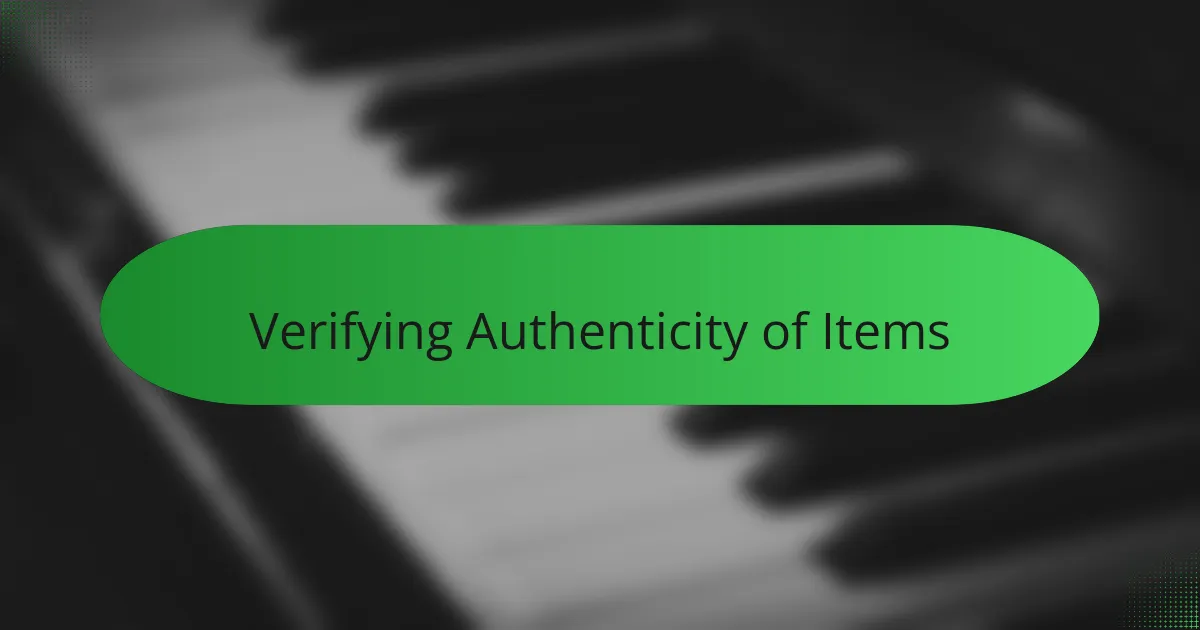
Verifying Authenticity of Items
Verifying authenticity became my top priority once I started spotting deals that seemed almost too good to be true. How do you know if that “vintage” Rumours album isn’t just a cleverly made copy? I learned to compare details like label fonts, sticker placements, and even the vinyl weight—these subtle differences are like fingerprints that separate genuine articles from fakes.
One time, I almost bought what looked like an original signed photograph, but something felt off. When I consulted a collector’s forum, fellow fans pointed out inconsistencies in the autograph’s flow and ink type. It was a valuable lesson: authenticity often requires community input and expert eyes, not just gut feelings.
I’ve found that documenting provenance—like original purchase receipts or credible seller histories—adds another layer of confidence. After all, owning a rare Fleetwood Mac item feels so much more thrilling when you know where it truly came from. Isn’t that what makes each find not just a collectible, but a living piece of the band’s legacy?

Tips for Negotiating and Buying
Negotiating for rare Fleetwood Mac items taught me to always start by doing my homework—knowing the item’s market value and recent sale prices gave me confidence and prevented overpaying. Have you ever felt the excitement of closing a deal just by asking politely? It’s amazing how a simple, respectful question about price or condition can open doors for better offers or bonus extras.
I also learned to stay patient and read the seller’s cues carefully. Once, when I spotted hesitation from a seller on a signed poster, I gently expressed genuine interest without rushing, and they eventually dropped the price after a few days. Sometimes, walking away and giving the seller time to reconsider works better than a hard bargain—have you tried that approach in your own hunts?
Lastly, I always double-check payment and shipping terms before sealing the deal. Knowing who covers shipping insurance or return policies saved me from unexpected costs more than once. Trust me, clear communication upfront not only protects your purchase but builds a good rapport with sellers—a win-win for future rare finds.
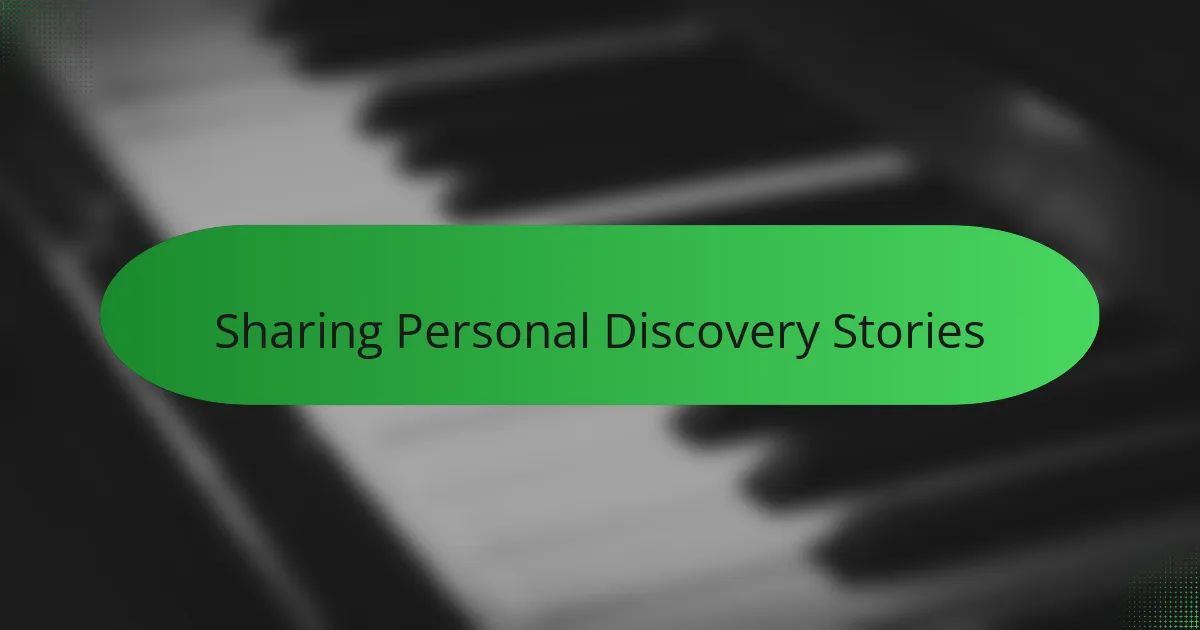
Sharing Personal Discovery Stories
Sharing personal discovery stories feels like passing down a treasured secret among fellow Fleetwood Mac fans. I remember the rush of excitement when I first uncovered a rare homemade mixtape with an unexpected live recording tucked inside—it was like stepping into a hidden snapshot of the band’s early days. Have you ever had that moment when something so unexpected deepens your connection to the music?
Each discovery story is unique, and it’s those unexpected twists that make collecting so addictive. I once found a handwritten note from a band member slipped inside a vintage photo album, and just holding it sparked a flood of emotions—almost like hearing a whisper from the past. Doesn’t it amaze you how these personal artifacts give us a direct line to the heart of Fleetwood Mac’s journey?
Sharing these stories with other fans always brings a new perspective. I’m often surprised by how others’ tales echo my own feelings of thrill and wonder, reminding me that collecting isn’t just about items—it’s about shared passion and the stories we create along the way. What discovery story of yours still gives you that unforgettable jolt of joy?
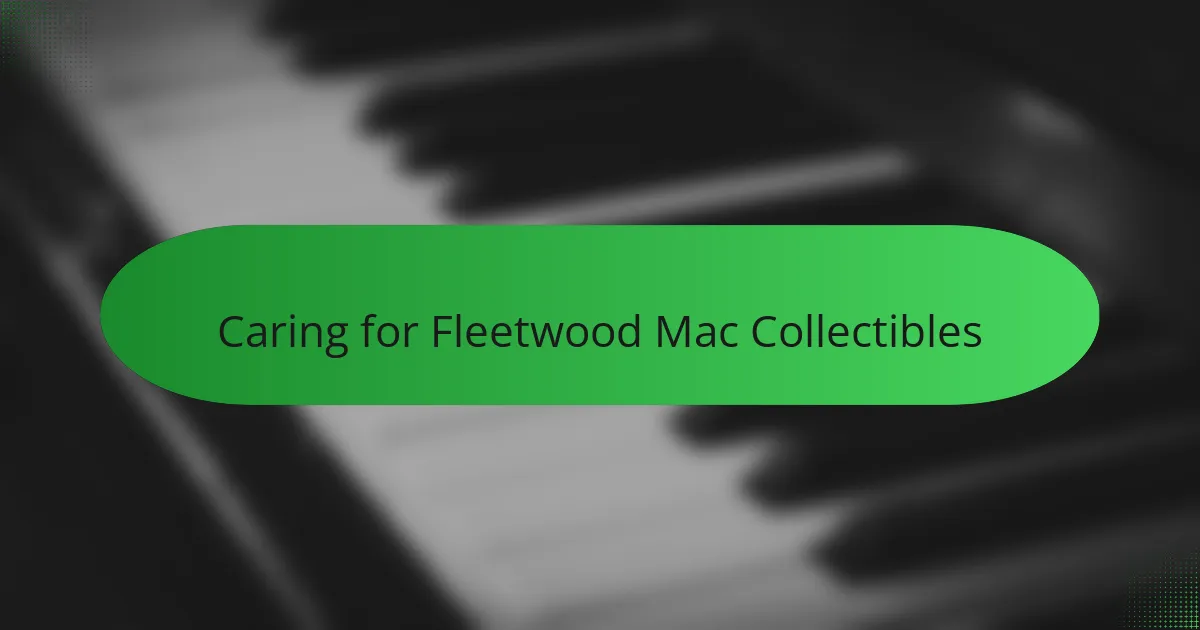
Caring for Fleetwood Mac Collectibles
Caring for Fleetwood Mac collectibles is something I’ve taken very seriously because these pieces carry so much history and emotion. One of my first lessons was realizing how sensitive vintage vinyl can be—just a tiny scratch or exposure to heat can damage its sound quality and value. Have you ever carefully wiped down a record and felt that moment of relief knowing you preserved its tone just a little longer?
I also learned that storing items properly makes all the difference. For instance, I keep my rare tour posters away from sunlight and humidity by using archival sleeves and acid-free backing boards. It’s a small step, but it protects the colors and paper from fading or warping over time. Doesn’t it feel rewarding to know you’re not just preserving an object but maintaining a piece of Fleetwood Mac’s legacy?
Handling collectibles with clean hands or cotton gloves became second nature, especially after I unintentionally left a fingerprint on a signed album cover and panicked. Those care habits might seem minor, but to me, they’re acts of respect and love for the band’s artistry. When you think about it, isn’t caring for these items a way of honoring the music and memories tied to them?